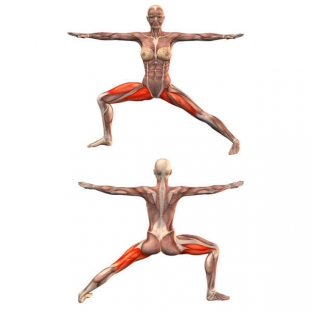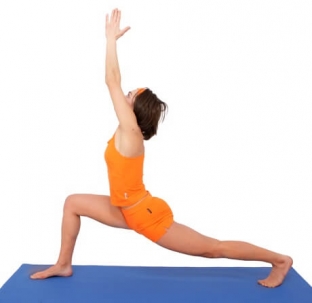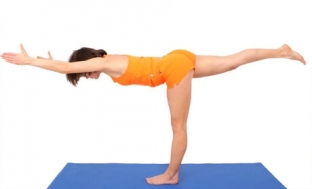Those who have been practicing yoga for a long time are already familiar with the “Warrior Pose”. Its correct name is Virabhadrasana. According to the legend, Virabhadra was a strong and invincible warrior who was created by Shiva. This asana was named after him, because, acting on our body, it gives it health, strength and good spirits, reports estet-portal.com. It is not easy to fulfill it, therefore it develops the will, the inquisitiveness of the mind and the strength of the muscles. There are up to 5 types of Virabhadrasana, but we will teach you the main three.
Indications and contraindications for performing the asana "Warrior Pose"
Performing the asana "Pose of a Warrior" is recommended for such diseases as:
- Arthritis and arthrosis,
- Osteochondrosis of any part of the spine.
It is also recommended:
- To improve joint mobility,
- When fat deposits accumulate in the abdomen and waist,
- To strengthen the muscular corset,
- For endurance and balance training,
- To expand the chest area,
- Promotes slim hips,
- Makes strong legs, buttocks and abs.
Contraindications for Warrior Pose
If you are experiencing problems such as:
- High blood pressure,
- Diseases of the cardiovascular system,
Also, if you suffer from back pain or misaligned discs, then don't jump in this position.
Older people, especially the elderly, are not recommended to stay in the pose for too long, as the load on the heart muscle increases.
Performing the Warrior Pose
This pose strengthens the connection between the body and the mind. Since it is not very convenient to perform it, you begin to feel your body more consciously, forcing it to maintain coordination.
It will help you not only become stronger and stronger, but also develop courage, as the stance itself already allows you to feel your own inner strength. We will consider 3 types of this asana, which are most often used.

Read also: May the force be with you: Strengthening core muscles with yoga
Warrior Pose 1 (Virabhadrasana I)
Asana technique:
- Legs are wide apart, they should be parallel.
- The left foot should be turned at a right angle to the left side, and the right foot, on the contrary, should be turned inward.
- Exhale, bend your left leg at the knee at a right angle. The body must be turned to the left side.
- Hands should be raised through the sides up above the head and palms joined.
- The left knee should clearly rise above the left heel. Do 7-10 breath cycles. Right leg straight.
- All the same must be repeated to the right side.
- Lower your arms through the groans, straighten up and assume Mountain Pose.

Warrior Pose 2 (Virabhadrasana II)
Asana technique:
- Legs are wide apart, they should be parallel.
- The left foot should be turned at right angles to the left side, and the right foot, on the contrary, should be turned inward.
- Exhale, bend your left leg at the knee at a right angle. The body must be turned to the left side.
- Hands should be raised through the sides to the line of the shoulders, while turning the head to the left.
- The gaze will look at the left hand. Do 7-10 cycles of breaths. Right leg straight.
- Watch your breath while doing it, it should be even and calm.
- Put your hands down. Straighten your body, put your legs parallel. Assume mountain pose.
- Repeat this yoga asana in the same order for the right leg only.

Warrior Pose 3 (Virabhadrasana III)
Asana technique:
- Standing in Mountain Pose, lean forward.
- The right leg should be lifted and pulled back, while the left should be straightened. The knee does not bend.
- Stretch your arms and try not to bend them.
- Now stand so that your right leg, back and outstretched arms are in a line parallel to the floor.
- Start breathing, 3-5 cycles.
- Lower your right leg and arms into Mountain Pose.
- Repeat the asana for the other leg.

Performing these asanas, you will not only learn how to control your body, but develop strength of mind and faith in your own abilities.
And you get this difficult asana, share your experience with us at estet-portal.com.






Add a comment